Water Budget Analysis in Arid Regions, Application to the United Arab Emirates
Abstract
:1. Introduction
2. Materials and Methods
2.1. Study Region
2.2. Methodology
2.3. Data
2.3.1. Terrestrial Water Storage
2.3.2. Precipitation
2.3.3. Soil Moisture
2.3.4. Desalinated and Recycled Water
2.3.5. Oil
3. Results
4. Discussion
Acknowledgments
Author Contributions
Conflicts of Interest
References
- Trondalen, J.M. Climate Change, Water Security, and Possible Remedies for the Middle East; The United Nations World Water Assessment Programs; 2009; Available online: http://www.unwater.org/downloads/181886E.pdf (accessed on 2 December 2013).
- Saif, O.; Mezher, T.; Arafat, H. Water security in the GCC countries: Challenges and opportunities. J. Environ. Stud. Sci. 2014, 4, 329–346. [Google Scholar] [CrossRef]
- United Nations Development Programme (UNDP). Water Governance in the Arab Region. Managing Scarcity and Securing the Future; UNDP: New York, NY, USA, 2013. [Google Scholar]
- Voss, K.A.; Famiglietti, J.S.; Lo, M.; de Linage, C.; Rodell, M.; Swenson, S.C. Groundwater depletion in the Middle East from GRACE with implications for transboundary water management in the Tigris-Euphrates-Western Iran region. Water Resour. Res. 2013, 49, 904–914. [Google Scholar] [CrossRef] [PubMed]
- Joodaki, G.; Wahr, J.; Swenson, S. Estimating the human contribution to groundwater depletion in the Middle East, from GRACE data, land surface models, and well observations. Water Resour. Res. 2014, 50, 2679–2692. [Google Scholar] [CrossRef]
- Ministry of Environment and Water (MoEW). United Arab Emirates Water Conservation Strategy. 2010. Available online: http://faolex.fao.org/docs/pdf/uae147095.pdf (accessed on 17 December 2013). [Google Scholar]
- Mezher, T.; Fath, H.; Abbas, Z.; Khaled, A. Techno-economic assessment and environmental impacts of desalination technologies. Desalination 2011, 266, 263–273. [Google Scholar] [CrossRef]
- Wahr, J.; Molenaar, M.; Bryan, F. Time variability of the Earth’s gravity field: Hydrological and oceanic effects and their possible detection using GRACE. J. Geophys. Res. Solid Earth 1998, 103, 30205–30229. [Google Scholar] [CrossRef]
- Rodell, M.; Famiglietti, J.S. Detectability of variations in continental water storage from satellite observations of the time dependent gravity field. Water Resour. Res. 1999, 35, 2705–2723. [Google Scholar] [CrossRef]
- Rodell, M.; Famiglietti, J.S. An analysis of terrestrial water storage variations in Illinois with implications for the Gravity Recovery and Climate Experiment (GRACE). Water Resour. Res. 2001, 37, 1327–1339. [Google Scholar] [CrossRef]
- Rodell, M.; Famiglietti, J.S. The potential for satellite-based monitoring of groundwater storage changes using GRACE: The High Plains aquifer, Central US. J. Hydrol. 2002, 263, 245–256. [Google Scholar] [CrossRef]
- Wahr, J.; Swenson, S.; Zlotnicki, V.; Velicogna, I. Time-variable gravity from GRACE: First results. Geophys. Res. Lett. 2004, 31, L11501. [Google Scholar] [CrossRef]
- Wahr, J.; Swenson, S.; Velicogna, I. Accuracy of GRACE mass estimates. Geophys. Res. Lett. 2006, 33, L06401. [Google Scholar] [CrossRef]
- Syed, T.H.; Famiglietti, J.S.; Rodell, M.; Chen, J.; Wilson, C.R. Analysis of terrestrial water storage changes from GRACE and GLDAS. Water Resour. Res. 2008, 44, W02433. [Google Scholar] [CrossRef]
- Longuevergne, L.; Scanlon, B.R.; Wilson, C.R. GRACE Hydrological estimates for small basins: Evaluating processing approaches on the High Plains Aquifer, USA. Water Resour. Res. 2010, 46, W11517. [Google Scholar] [CrossRef]
- Landerer, F.W.; Swenson, S.C. Accuracy of scaled GRACE terrestrial water storage estimates. Water Resour. Res. 2012, 48, W04531. [Google Scholar] [CrossRef]
- Rodell, M.; Famiglietti, J.S.; Chen, J.; Seneviratne, S.I.; Viterbo, P.; Holl, S.; Wilson, C.R. Basin scale estimates of evapotranspiration using GRACE and other observations. Geophys. Res. Lett. 2004, 31, L20504. [Google Scholar] [CrossRef]
- Yeh, P.J.-F.; Irizarry, M.; Eltahir, E.A.B. Hydroclimatology of Illinois: A comparison of monthly evaporation estimates based on atmospheric water balance and soil water balance. J. Geophys. Res. Atmos. 1998, 103, 19823–19837. [Google Scholar] [CrossRef]
- Yeh, P.J.F.; Swenson, S.C.; Famiglietti, J.S.; Rodell, M. Remote sensing of groundwater storage changes in Illinois using the Gravity Recovery and Climate Experiment (GRACE). Water Resour. Res. 2006, 42, W12203. [Google Scholar] [CrossRef]
- Rodell, M.; Chen, J.; Kato, H.; Famiglietti, J.; Nigro, J.; Wilson, C. Estimating groundwater storage changes in the Mississippi River basin (USA) using GRACE. Hydrogeol. J. 2007, 15, 159–166. [Google Scholar] [CrossRef]
- Getirana, A. Extreme Water Deficit in Brazil Detected from Space. J. Hydrometeorol. 2016, 17, 591–599. [Google Scholar] [CrossRef]
- Haile, K.H. Estimation of Terrestrial Water Storage in the Upper Reach of Yellow River. Master’s Thesis, Retrieved from Faculty of Geo-Information Science and Earth Observation Library, University of Twente, Enschede, The Netherlands, 2011. [Google Scholar]
- Crowley, J.W.; Mitrovica, J.X.; Bailey, R.C.; Tamisiea, M.E.; Davis, J.L. Land water storage within the Congo Basin inferred from GRACE satellite gravity data. Geophys. Res. Lett. 2006, 33, L19402. [Google Scholar] [CrossRef]
- Wang, S.; Huang, J.; Li, J.; Rivera, A.; McKenney, D.W.; Sheffield, J. Assessment of water budget for sixteen large drainage basins in Canada. J. Hydrol. 2014, 512, 1–15. [Google Scholar] [CrossRef]
- Wang, S.; Huang, J.; Yang, D.; Pavlic, G.; Li, J. Long-term water budget imbalances and error sources for cold region drainage basins. Hydrol. Process. 2015, 29, 2125–2136. [Google Scholar] [CrossRef]
- Sheffield, J.; Ferguson, C.R.; Troy, T.J.; Wood, E.F.; McCabe, M.F. Closing the terrestrial water budget from satellite remote sensing. Geophys. Res. Lett. 2009, 36, L07403. [Google Scholar] [CrossRef]
- Food and Agriculture Organization (FAO). Irrigation in the Middle East Region in Figures—AQUASTAT Survey 2008. 2008. Available online: http://www.fao.org/nr/water/aquastat/countries_regions/are/ARE-CP_eng.pdf (accessed on 20 February 2014).
- Niranjan Kumar, K.; Ouarda, T.B.M.J. Precipitation variability over UAE and global SST teleconnections. J. Geophys. Res. Atmos. 2014, 119. [Google Scholar] [CrossRef]
- Niranjan Kumar, K.; Ouarda, T.B.M.J.; Sandeep, S.; Ajayamohan, R.S. Wintertime precipitation variability over the Arabian Peninsula and its relationship with ENSO in the CAM4 Simulations. Clim. Dyn. 2016, 1–12. [Google Scholar] [CrossRef]
- Chandran, A.; Basha, G.; Ouarda, T.B.M.J. Influence of Climate Oscillations on Temperature and Precipitation over the United Arab Emirates. Int. J. Climatol. 2015. [Google Scholar] [CrossRef]
- Ouarda, T.B.M.J.; Charron, C.; Niranjan Kumar, K.; Marpu, P.R.; Ghedira, H.; Molini, A.; Khayal, I. Evolution of the rainfall regime in the United Arab Emirates. J. Hydrol. 2014, 514, 258–270. [Google Scholar] [CrossRef]
- Ghouse, B.; Ouarda, T.B.M.J.; Marpu, P.R. Long-term projections of Temperature, Precipitation and Soil moisture using non-stationary oscillation processes over the UAE region. Int. J. Climatol. 2015. [Google Scholar] [CrossRef]
- Jet Propulsion Laboratory. GRACE Tellus: Gravity Recovery and Climate Experiment. 2014. Available online: http://grace.jpl.nasa.gov/mission/grace/ (accessed on 15 July 2014). [Google Scholar]
- Rizk, Z.S.; Al Sharhan, S.A. Water resources in the United Arab Emirates. Water Resour. Perspect. Eval. Manag. Policy 2003, 50, 245–264. [Google Scholar]
- Al-Nuaimi, H.S.; Murad, A.A. Changes in Water Resources Systems: Methodologies to Maintain Water Security and Ensure Integrated Management. In Proceedings of the Symposium HS3006 at IUGG 2007, Perugia, Italy, 2–13 July 2007.
- Ministry of Environment and Water (MoEW). UAE Dams and Storage Capacity; MoEW: Abu Dhabi, UAE, 2013.
- Jet Propulsion Laboratory. GRACE Tellus: Gravity Recovery and Climate Experiment. 2014. Available online: http://grace.jpl.nasa.gov/data/solutioncomparison (accessed on 13 July 2014). [Google Scholar]
- Sakumura, C.; Bettadpur, S.; Bruinsma, S. Ensemble prediction and intercomparison analysis of GRACE time-variable gravity field models. Geophys. Res. Lett. 2014, 41, 1389–1397. [Google Scholar] [CrossRef]
- Jet Propulsion Laboratory. GRACE Tellus Monthly Mass Grids-Land. Available online: http://grace.jpl.nasa.gov/data/get-data/monthly-mass-grids-land/ (accessed on 1 September 2016).
- Swenson, S.C. GRACE Monthly Land Water Mass Grids NETCDF RELEASE 5.0. Ver. 5.0. PO.DAAC, CA, USA. 2012. Available online: http://dx.doi.org/10.5067/TELND-NC005 (accessed on 27 April 2014).
- Swenson, S.; Wahr, J. Post-processing removal of correlated errors in GRACE data. Geophys. Res. Lett. 2006, 33, L08402. [Google Scholar] [CrossRef]
- NASA. Goddard Earth Sciences Data and Information Services Center. 2014. Available online: http://disc.sci.gsfc.nasa.gov/precipitation/additional/instruments/trmm_instr.shtml (accessed on 26 June 2014). [Google Scholar]
- Gu, H.-H.; Yu, Z.-B.; Yang, C.-G.; Ju, Q.; Lu, B.-H.; Liang, C. Hydrological assessment of TRMM rainfall data over Yangtze River Basin. Water Sci. Eng. 2010, 3, 418–430. [Google Scholar]
- Collischonn, B.; Collischonn, W.; Tucci, C.E.M. Daily hydrological modeling in the Amazon basin using TRMM rainfall estimates. J. Hydrol. 2008, 360, 207–216. [Google Scholar] [CrossRef]
- NASA. Goddard Earth Sciences Data and Information Services Center. Available online: http://mirador.gsfc.nasa.gov (accessed on 3 February 2014).
- Rodell, M.; Houser, P.R.; Jambor, U.; Gottschalck, J.; Mitchell, K.; Meng, C.J.; Arsenault, K.; Cosgrove, B.; Radakovich, J.; Bosilovich, M.; et al. The Global Land Data Assimilation System. Bull. Am. Meteorol. Soc. 2004, 85, 381–394. [Google Scholar] [CrossRef]
- NASA. LDAS Land Data Assimilation Systems. 2014. Available online: http://ldas.gsfc.nasa.gov/gldas/GLDASforcing.php (accessed on 18 August 2014). [Google Scholar]
- Fang, H.; Beaudoing, H.K.; Rodell, M.; Teng, W.L.; Vollmer, B.E. Global Land Data Assimilation System (GLDAS) products, services and application from NASA Hydrology Data and Information Services Center (HDISC). In Proceedings of the ASPRS 2009 Annual Conference, Baltimore, MD, USA, 8–13 March 2009.
- U.S. Energy Information Administration (EIA). Country Analysis Brief: United Arab Emirates. Available online: http://www.eia.gov/countries/analysisbriefs/UAE/uae.pdf (accessed on 4 June 2014).
- U.S. Energy Information Administration (EIA). United Arab Emirates. Available online: https://www.eia.gov/beta/international/analysis.cfm?iso=ARE (accessed on 4 June 2014).
- Dargin, J. Addressing the UAE Natural Gas Crisis: Strategies for a Rational Energy Policy; Policy Brief, Dubai Initiative; Belfer Center for Science and International Affairs, Harvard Kennedy School: Cambridge, MA, USA, 2010. [Google Scholar]
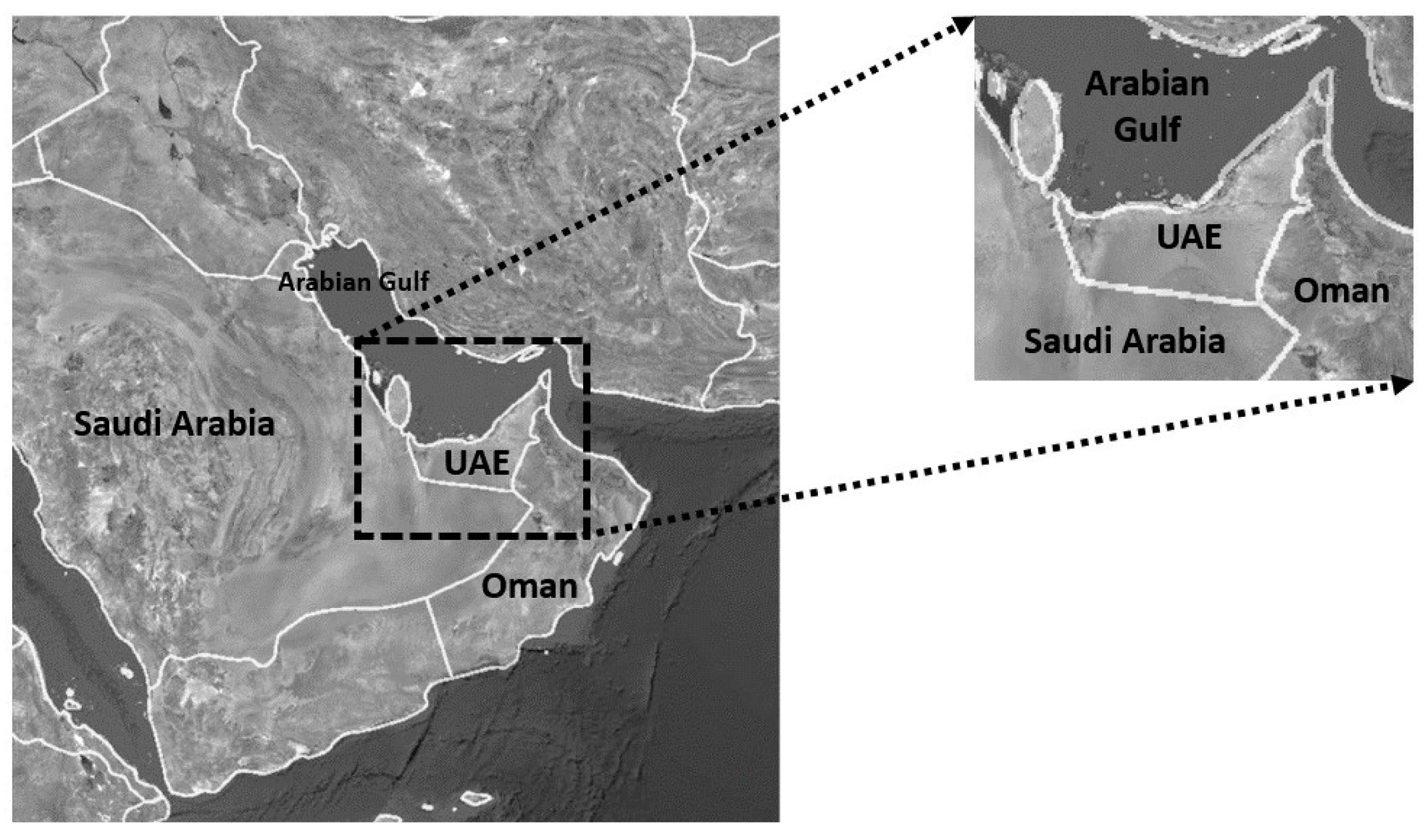
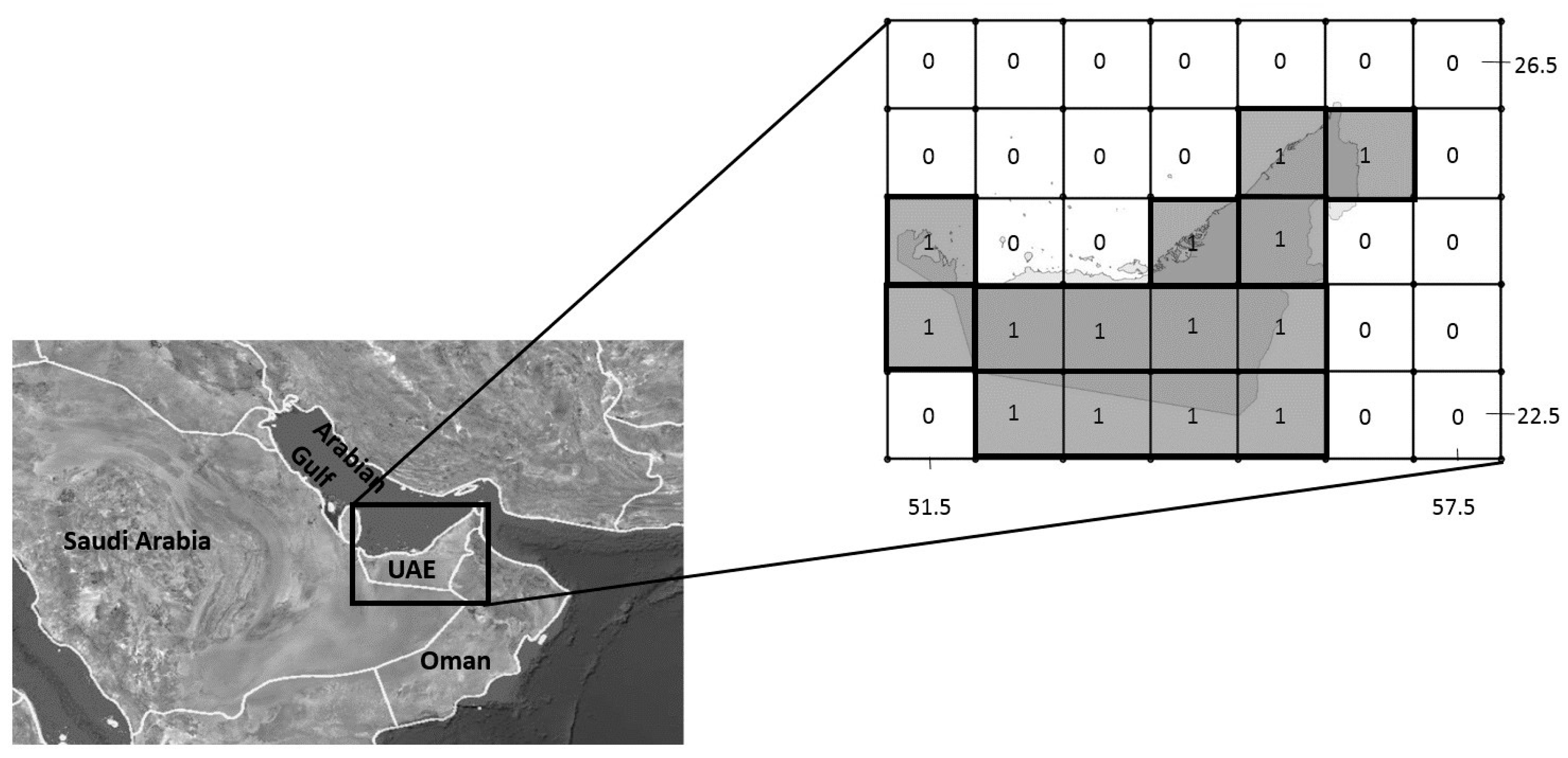
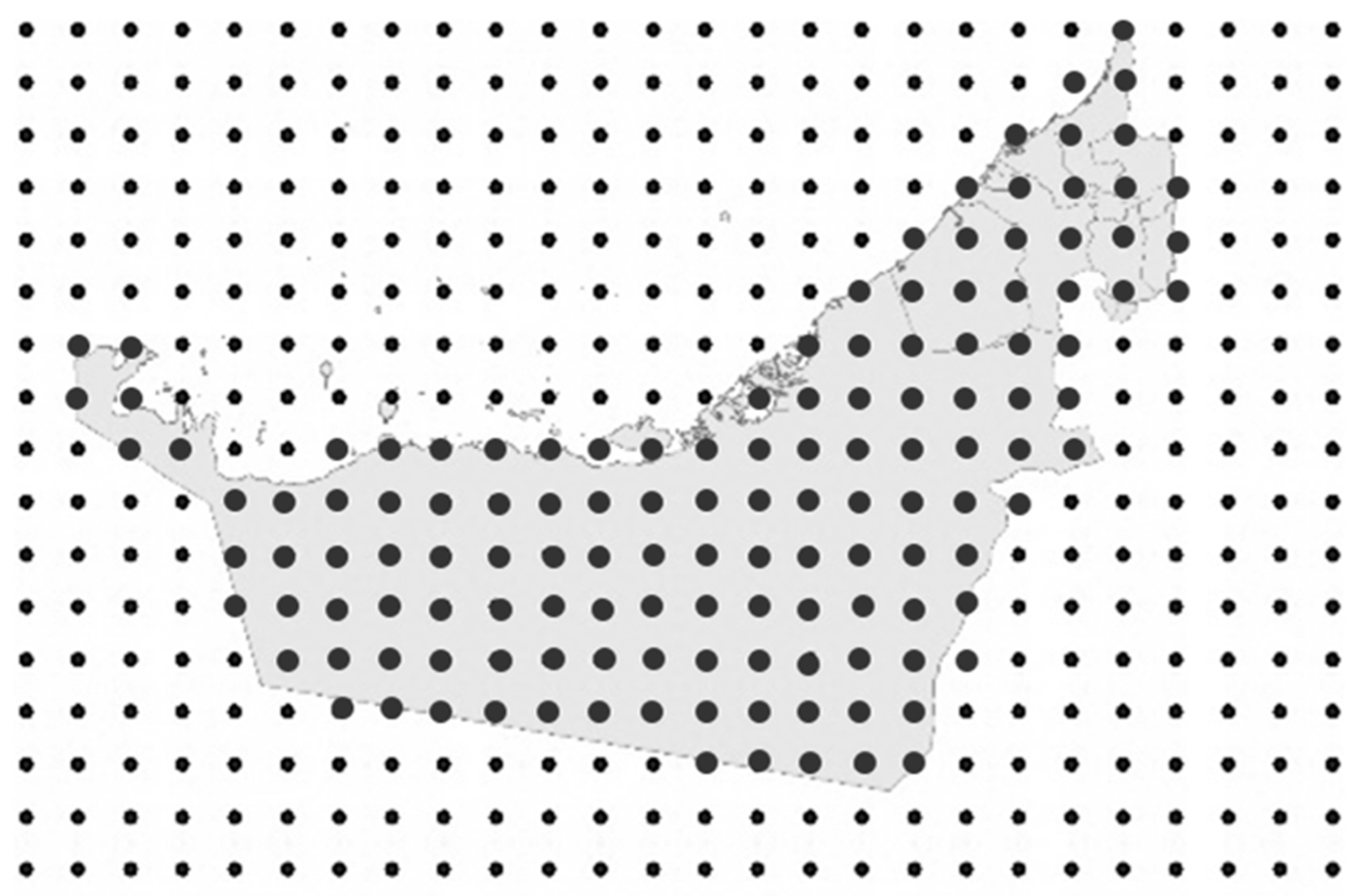
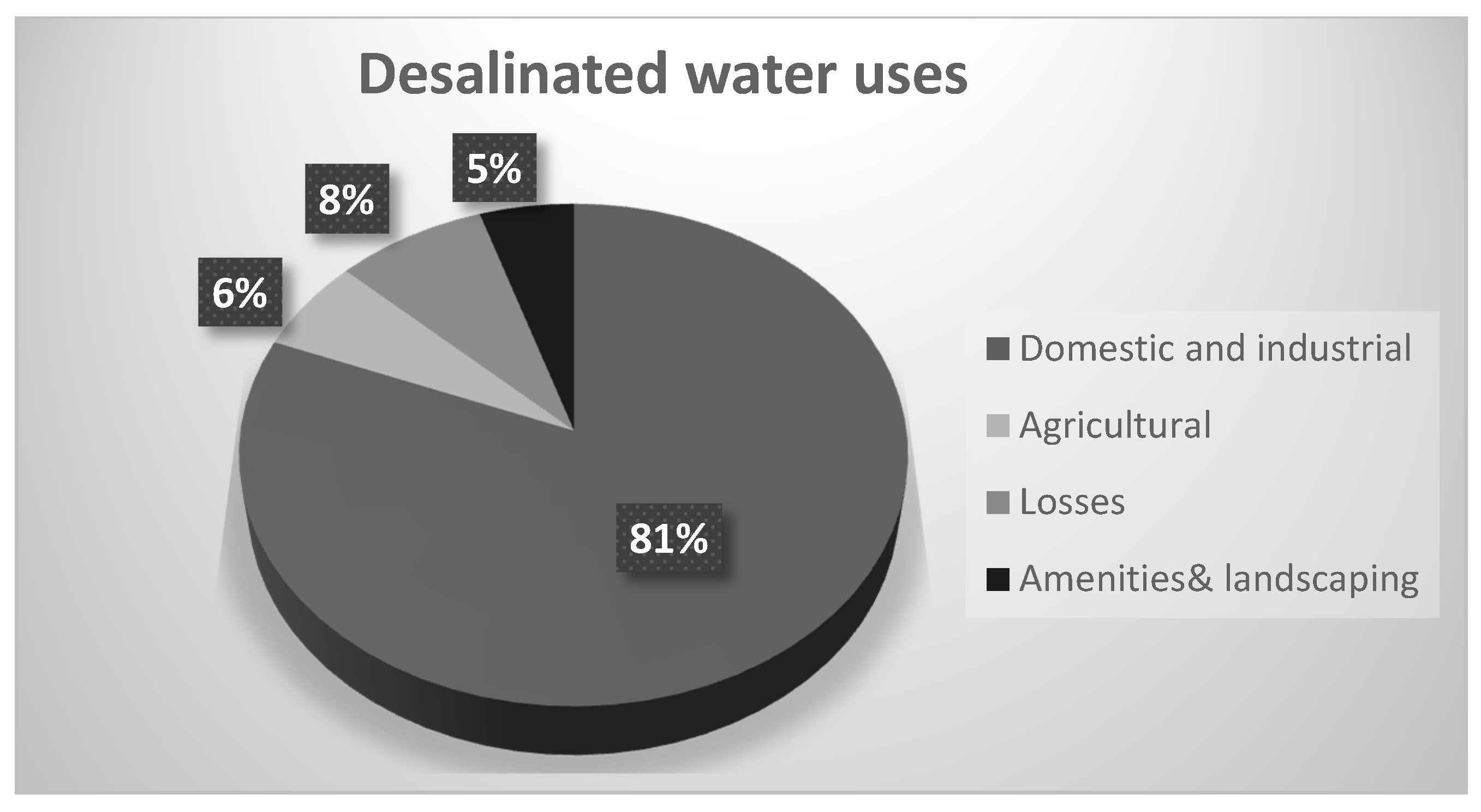
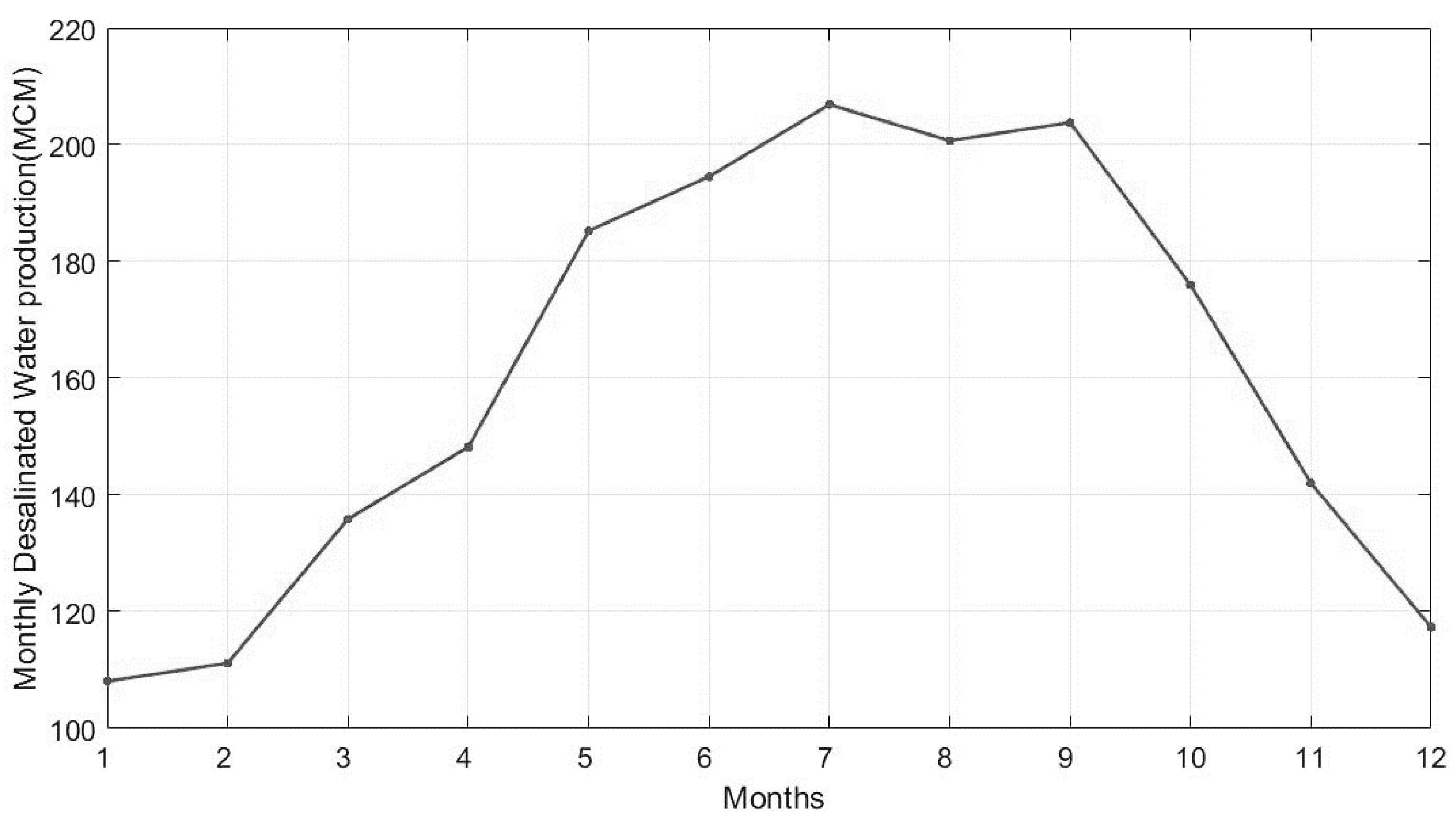
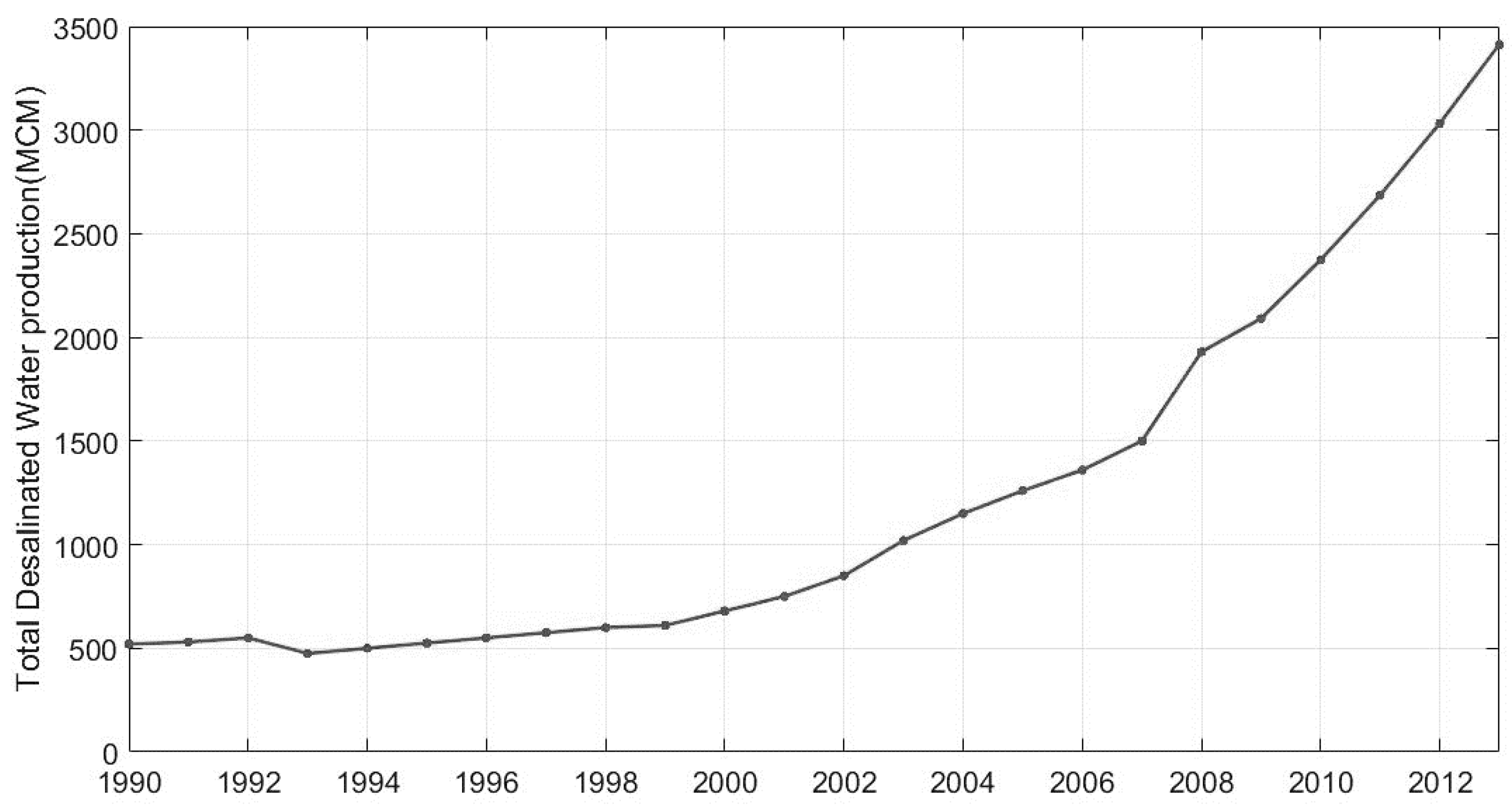
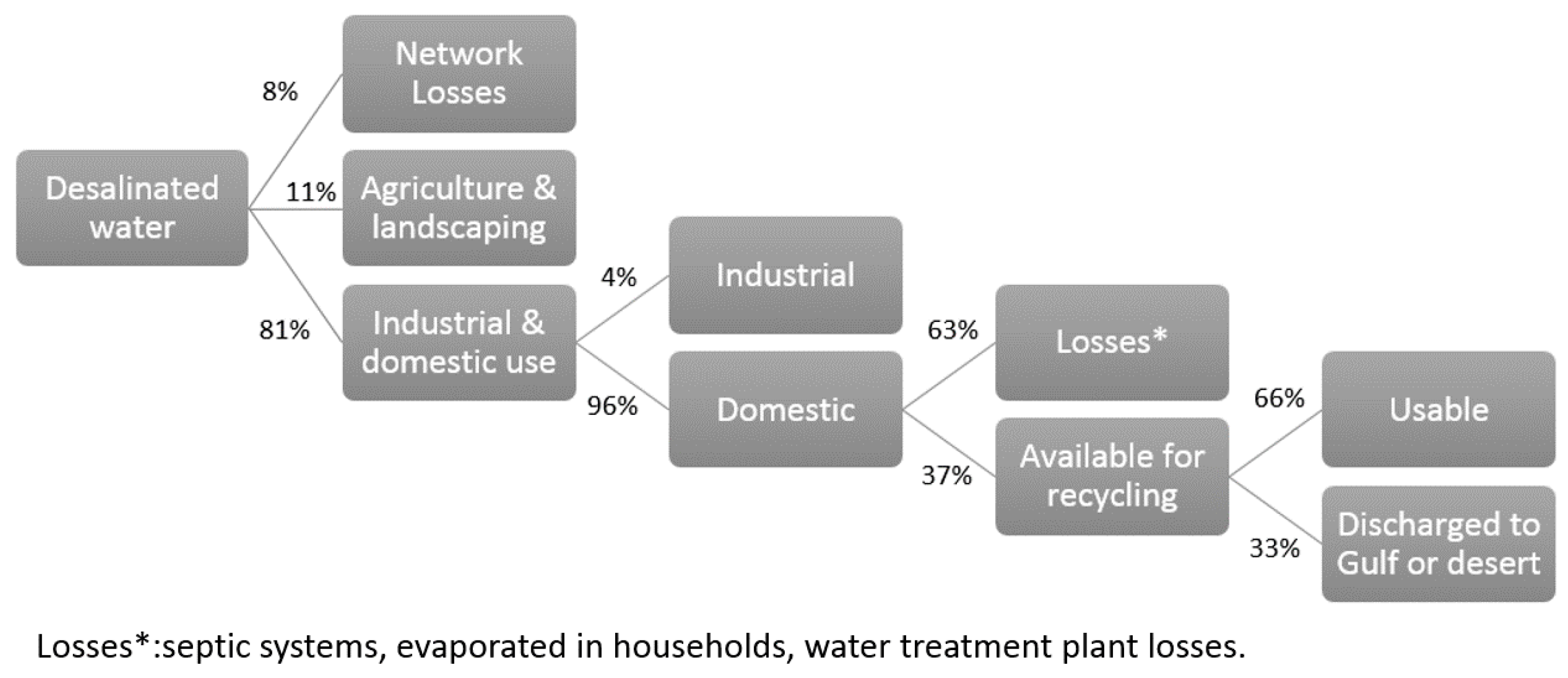
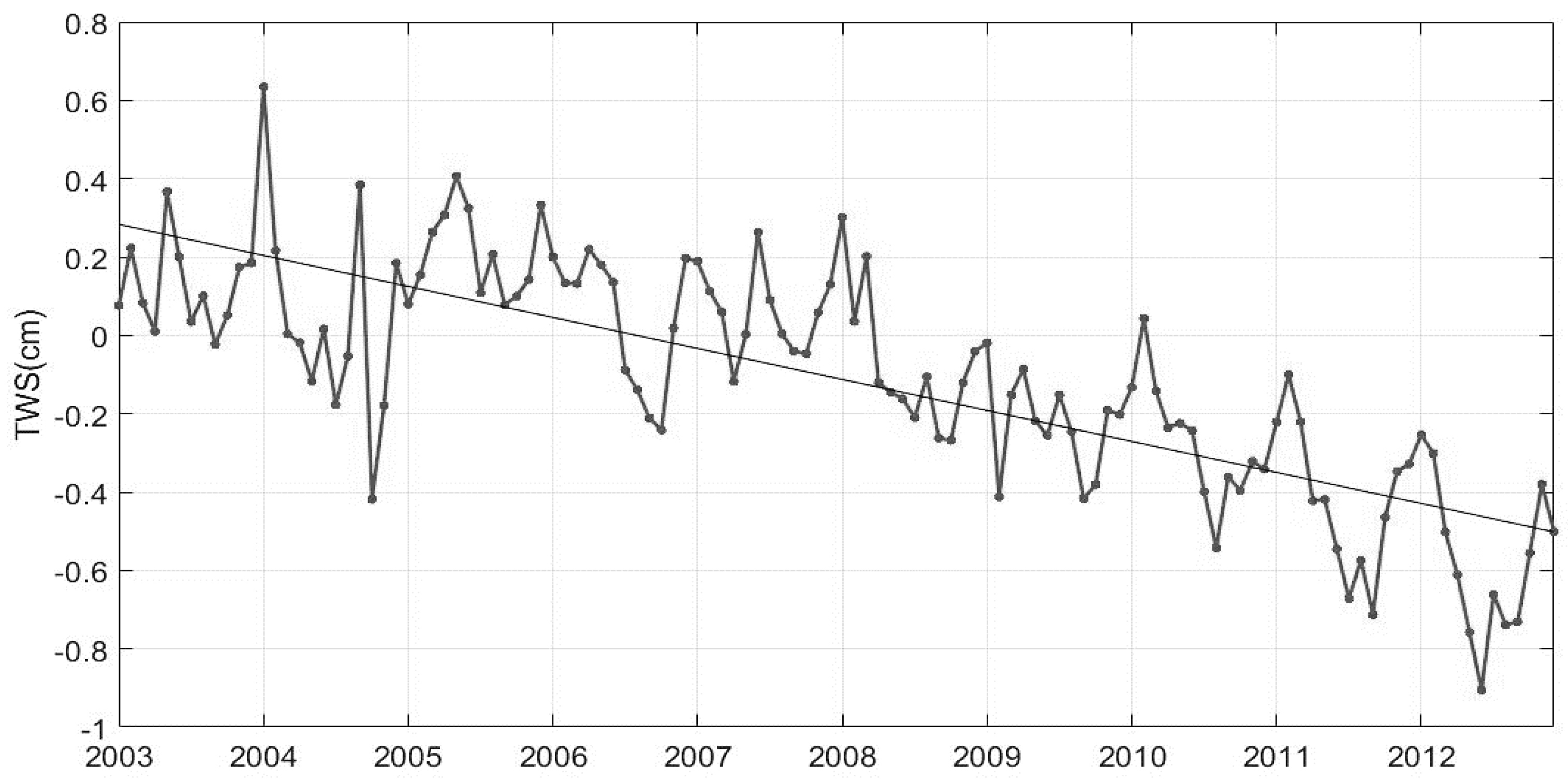
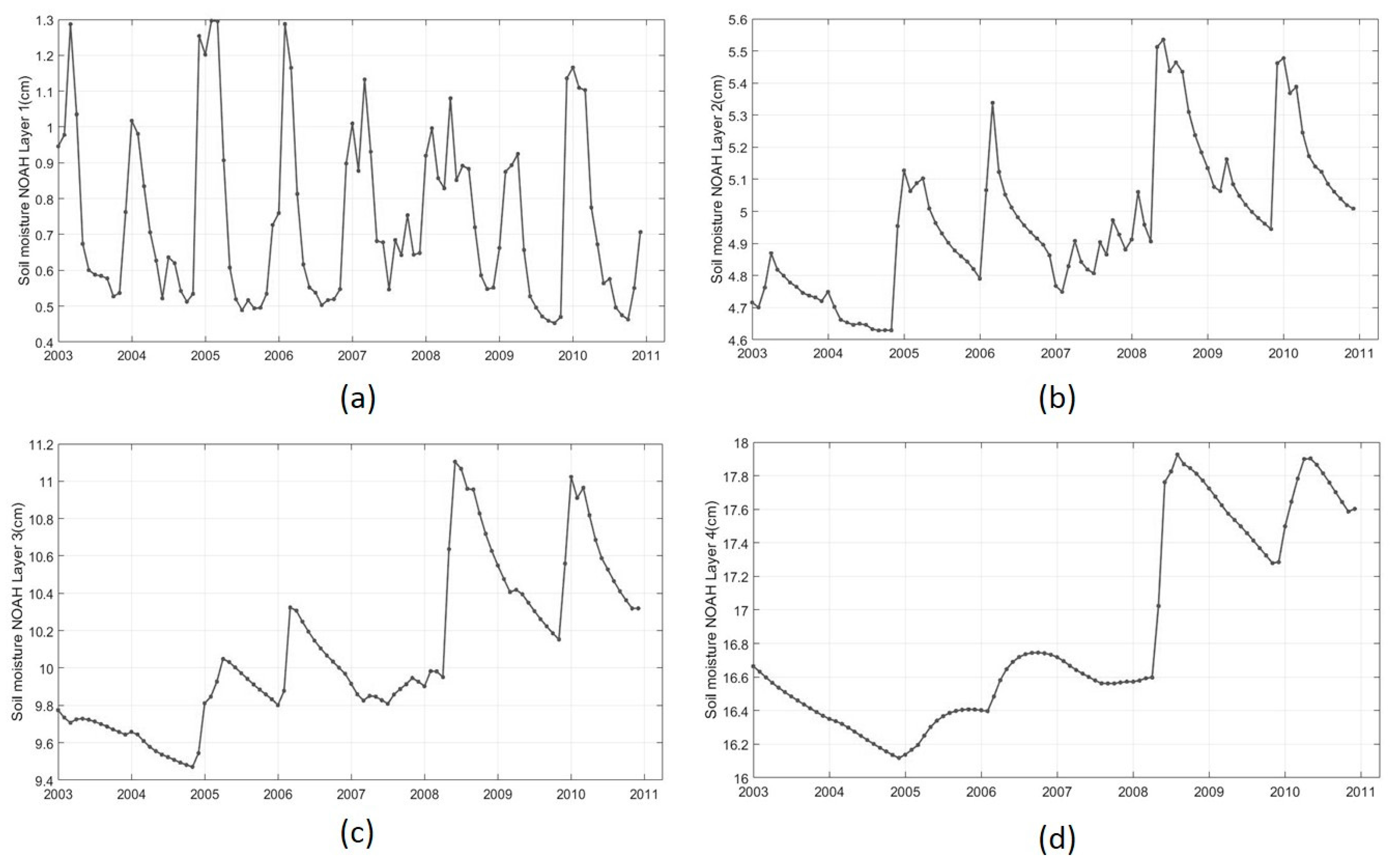
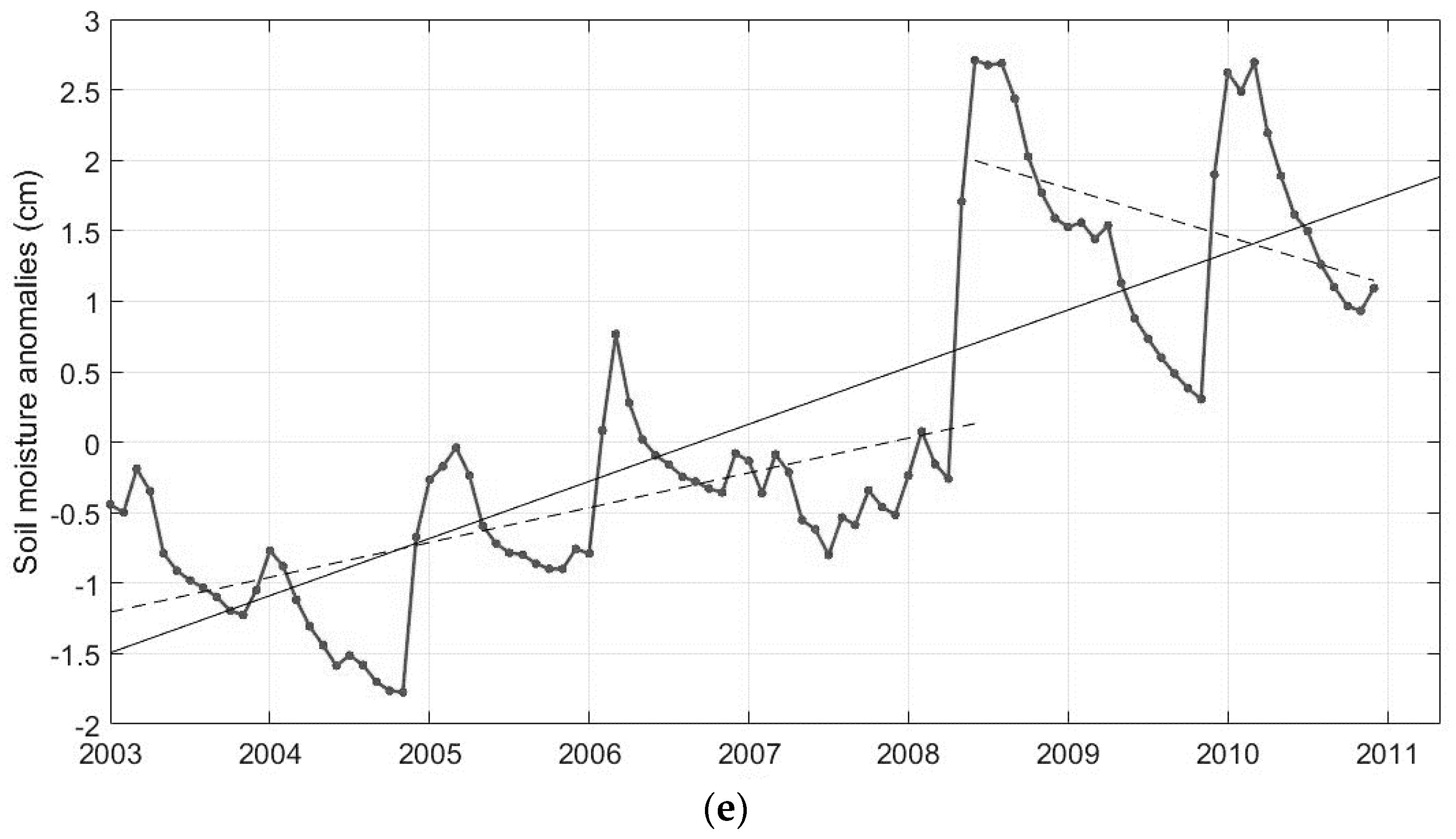
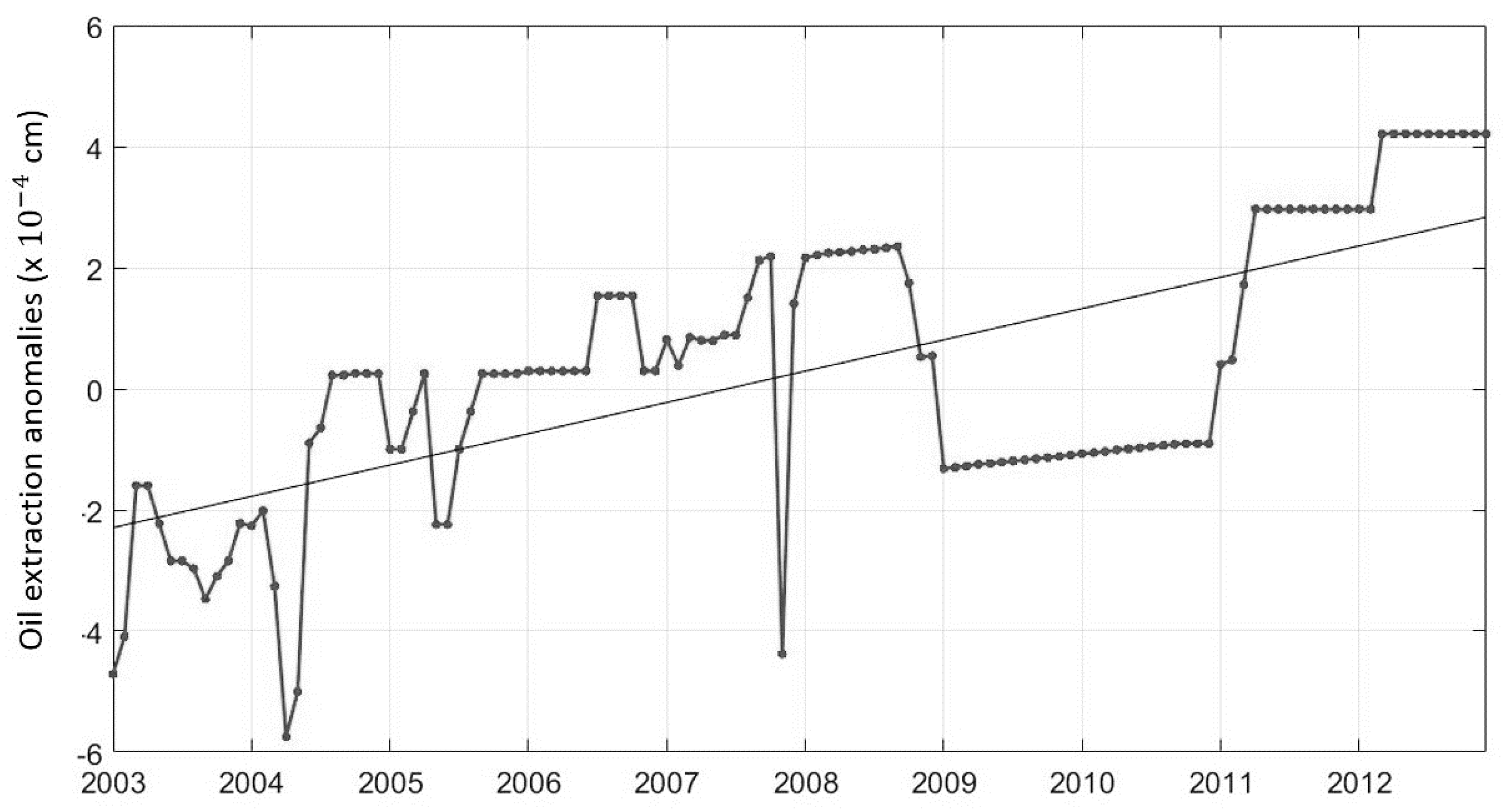
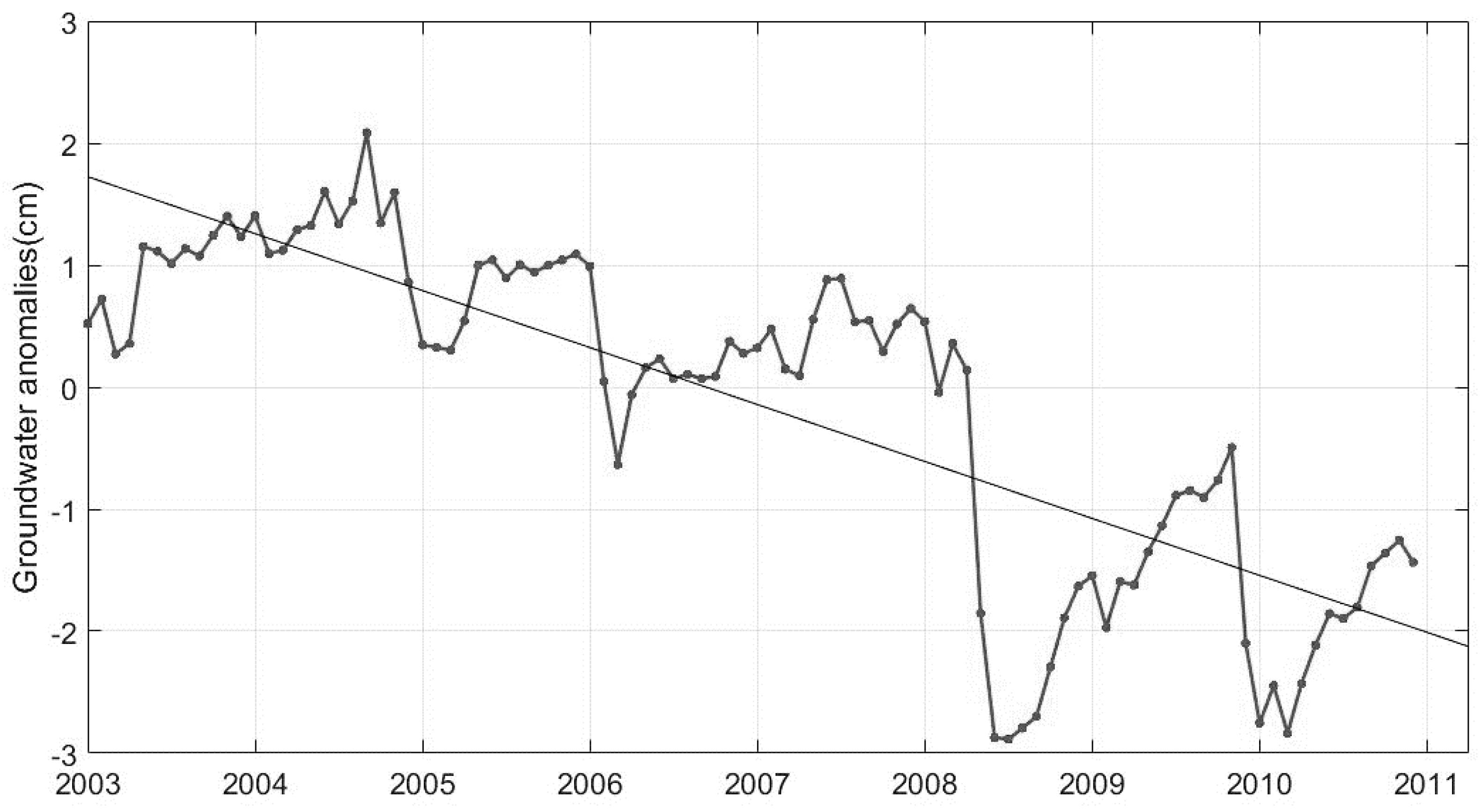
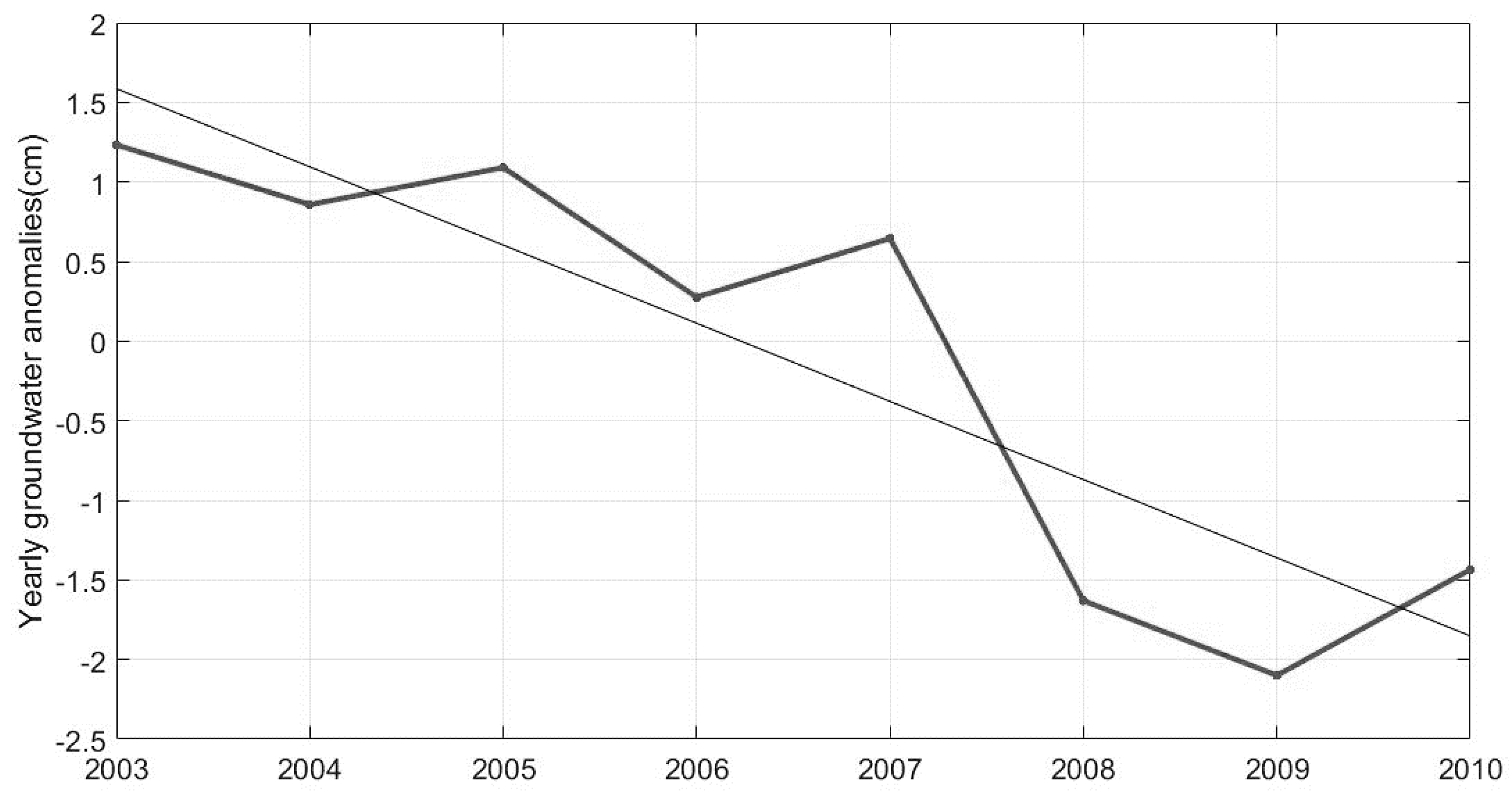
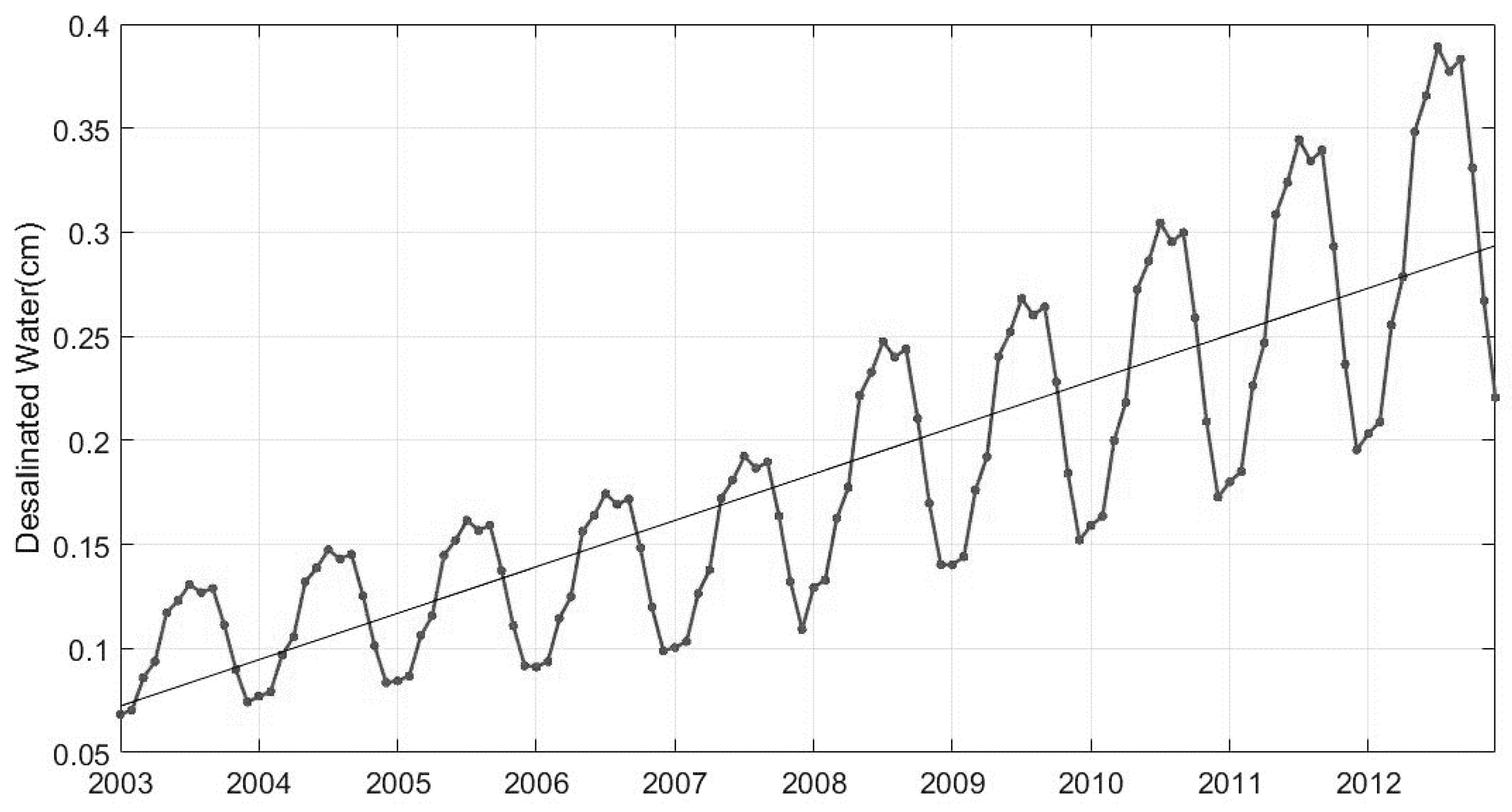
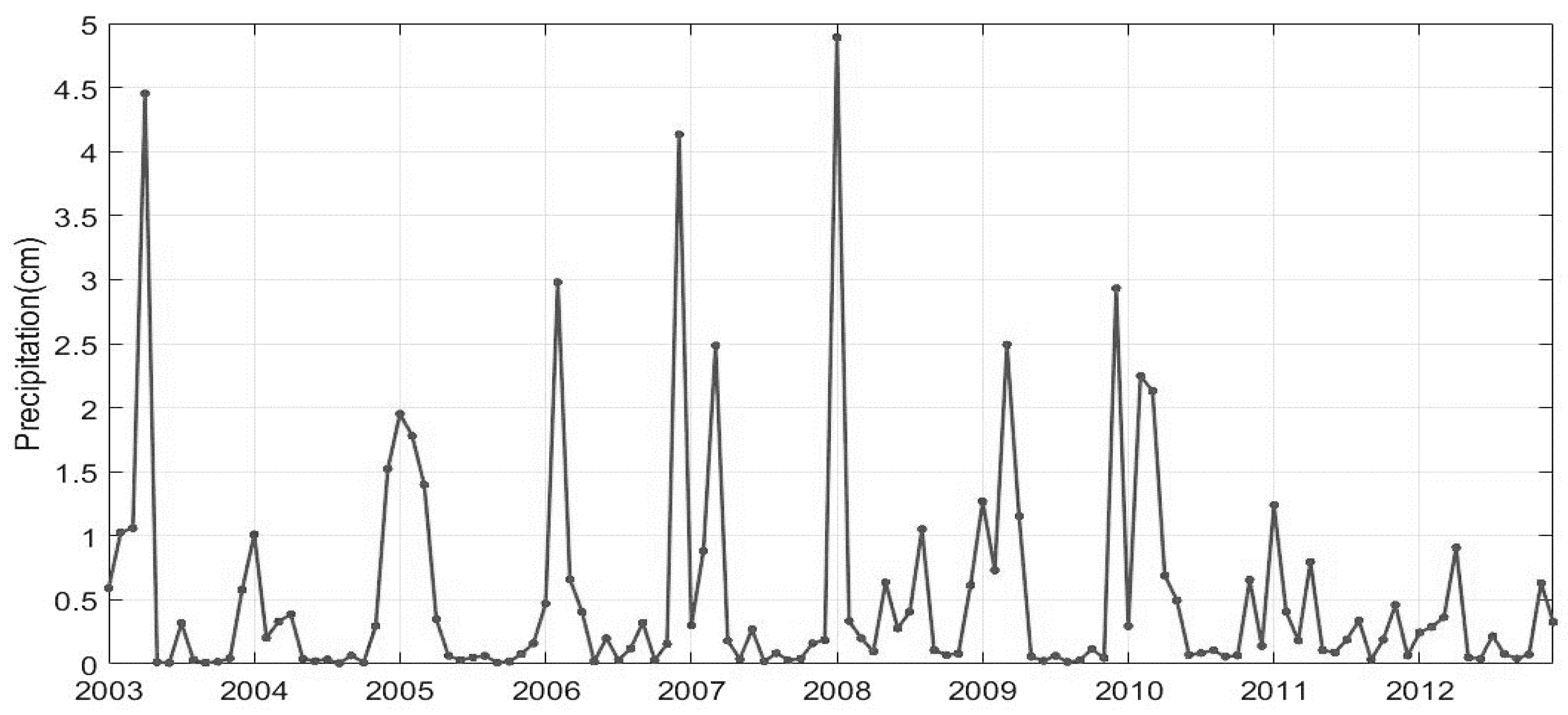
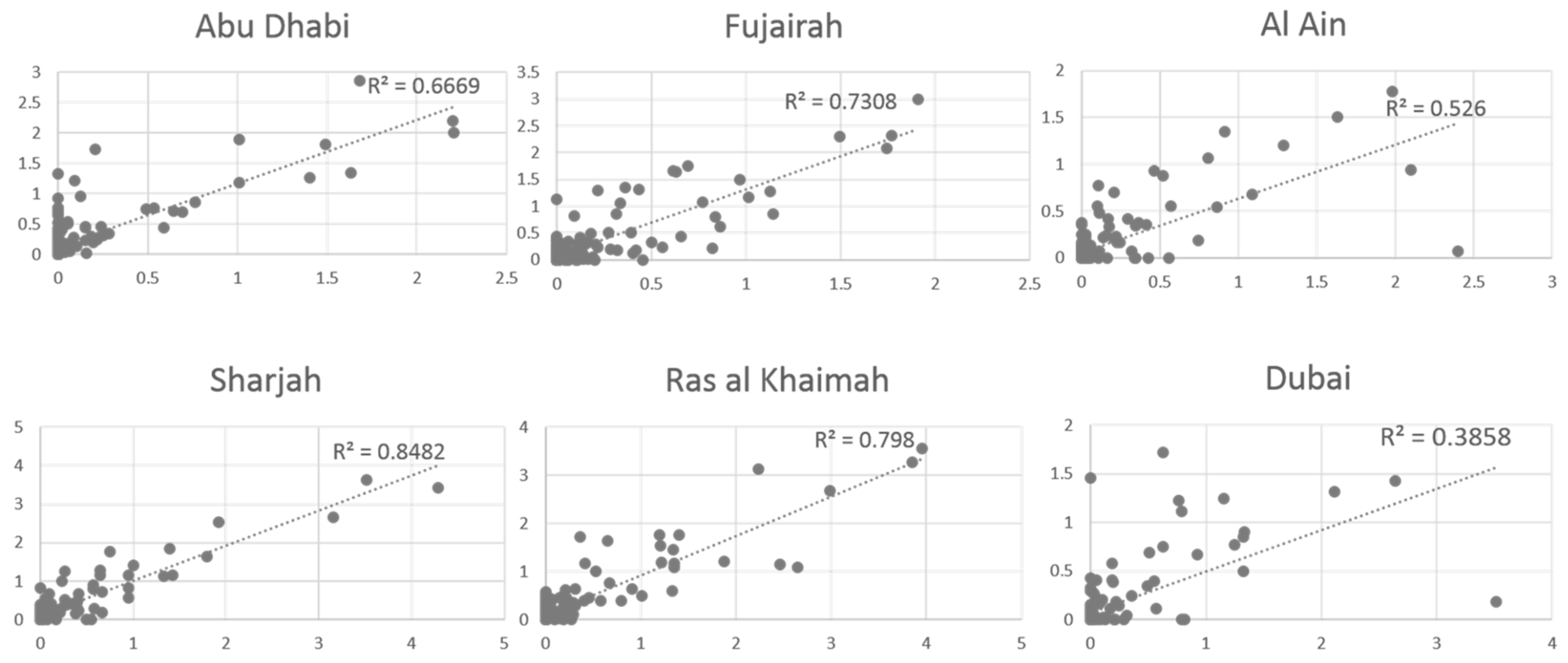
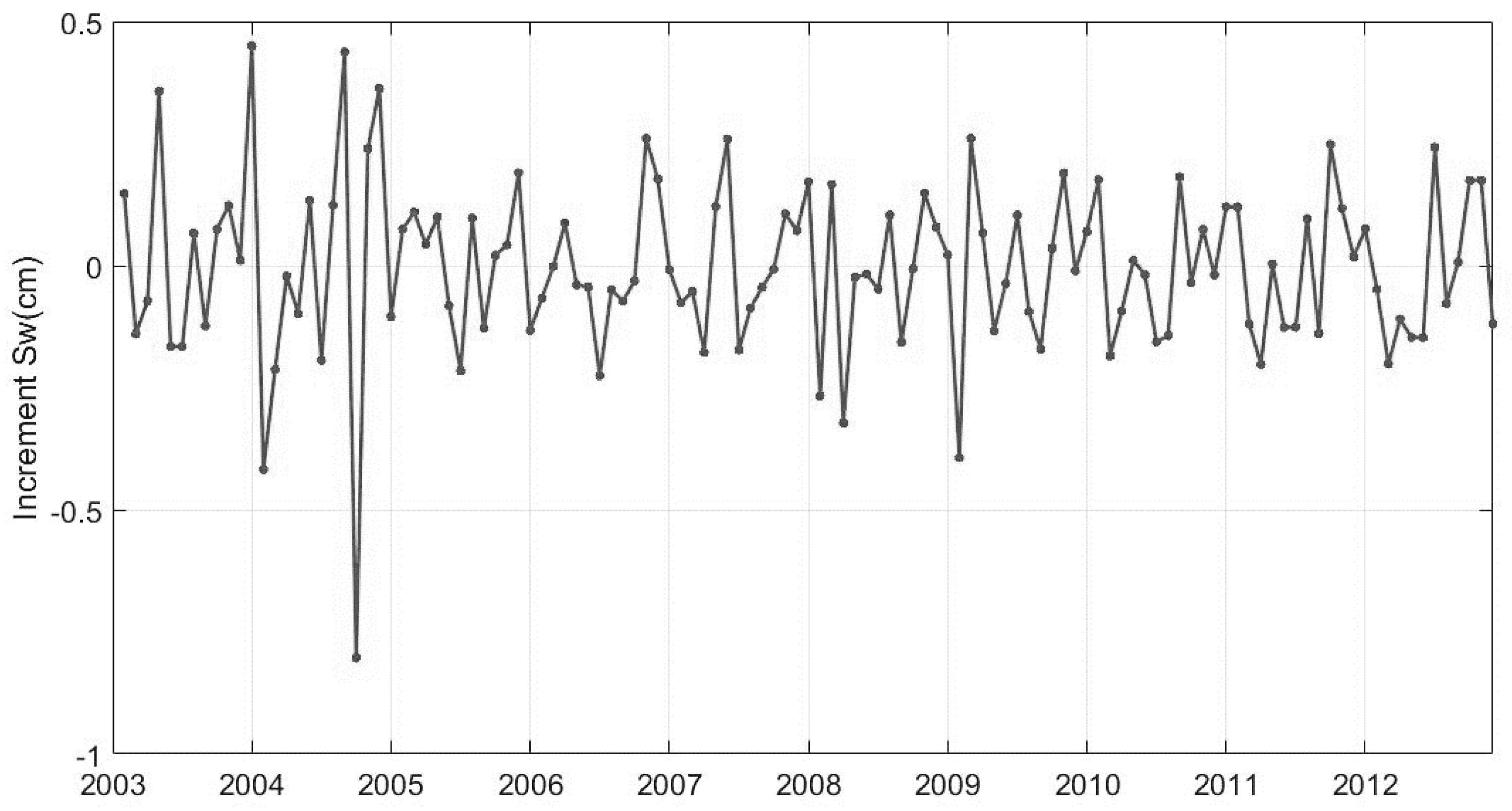

© 2016 by the authors; licensee MDPI, Basel, Switzerland. This article is an open access article distributed under the terms and conditions of the Creative Commons Attribution (CC-BY) license (http://creativecommons.org/licenses/by/4.0/).
Share and Cite
Gonzalez, R.; Ouarda, T.B.M.J.; Marpu, P.R.; Allam, M.M.; Eltahir, E.A.B.; Pearson, S. Water Budget Analysis in Arid Regions, Application to the United Arab Emirates. Water 2016, 8, 415. https://doi.org/10.3390/w8090415
Gonzalez R, Ouarda TBMJ, Marpu PR, Allam MM, Eltahir EAB, Pearson S. Water Budget Analysis in Arid Regions, Application to the United Arab Emirates. Water. 2016; 8(9):415. https://doi.org/10.3390/w8090415
Chicago/Turabian StyleGonzalez, Rocio, Taha B. M. J. Ouarda, Prashanth R. Marpu, Mariam M. Allam, Elfatih A. B. Eltahir, and Simon Pearson. 2016. "Water Budget Analysis in Arid Regions, Application to the United Arab Emirates" Water 8, no. 9: 415. https://doi.org/10.3390/w8090415
APA StyleGonzalez, R., Ouarda, T. B. M. J., Marpu, P. R., Allam, M. M., Eltahir, E. A. B., & Pearson, S. (2016). Water Budget Analysis in Arid Regions, Application to the United Arab Emirates. Water, 8(9), 415. https://doi.org/10.3390/w8090415






